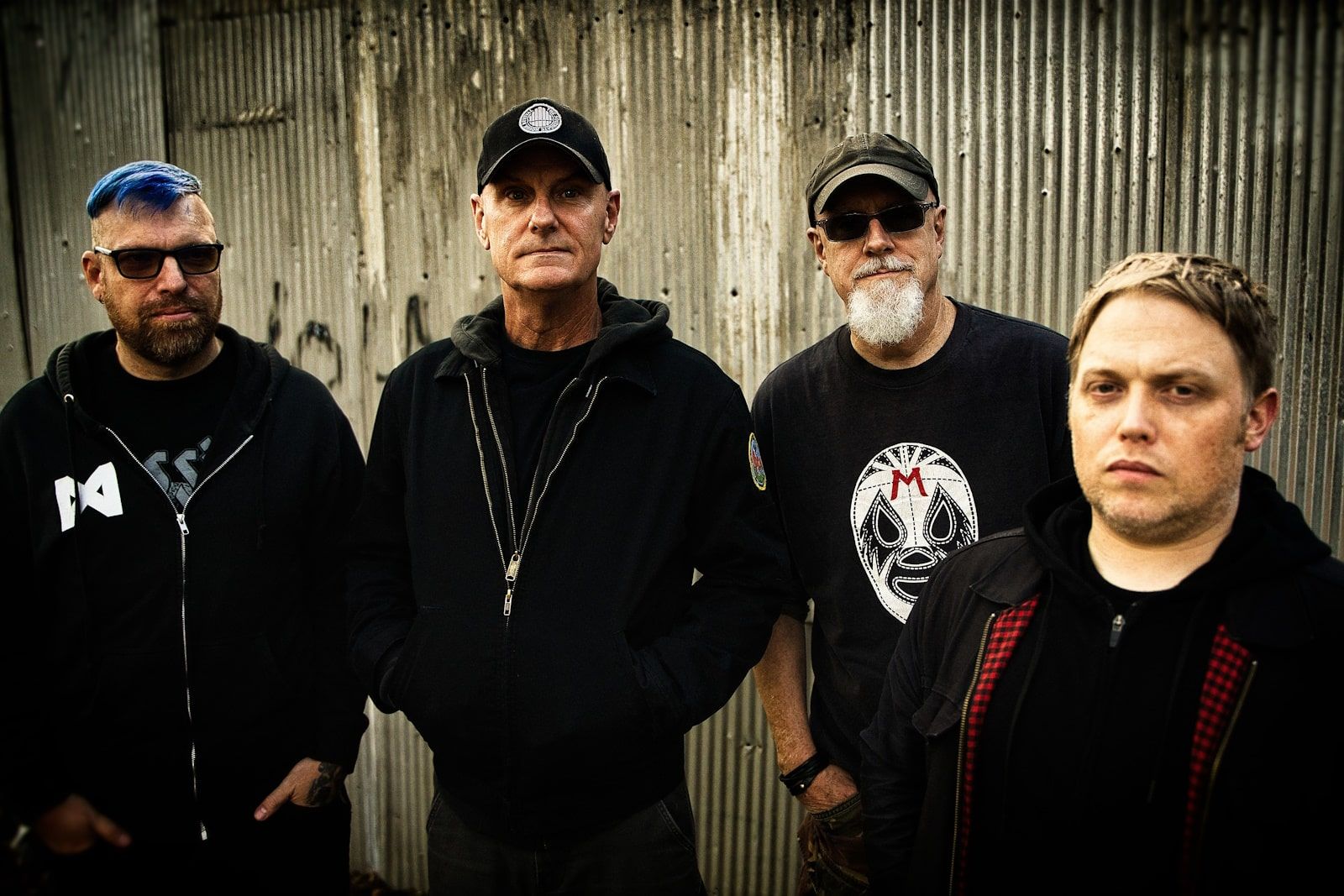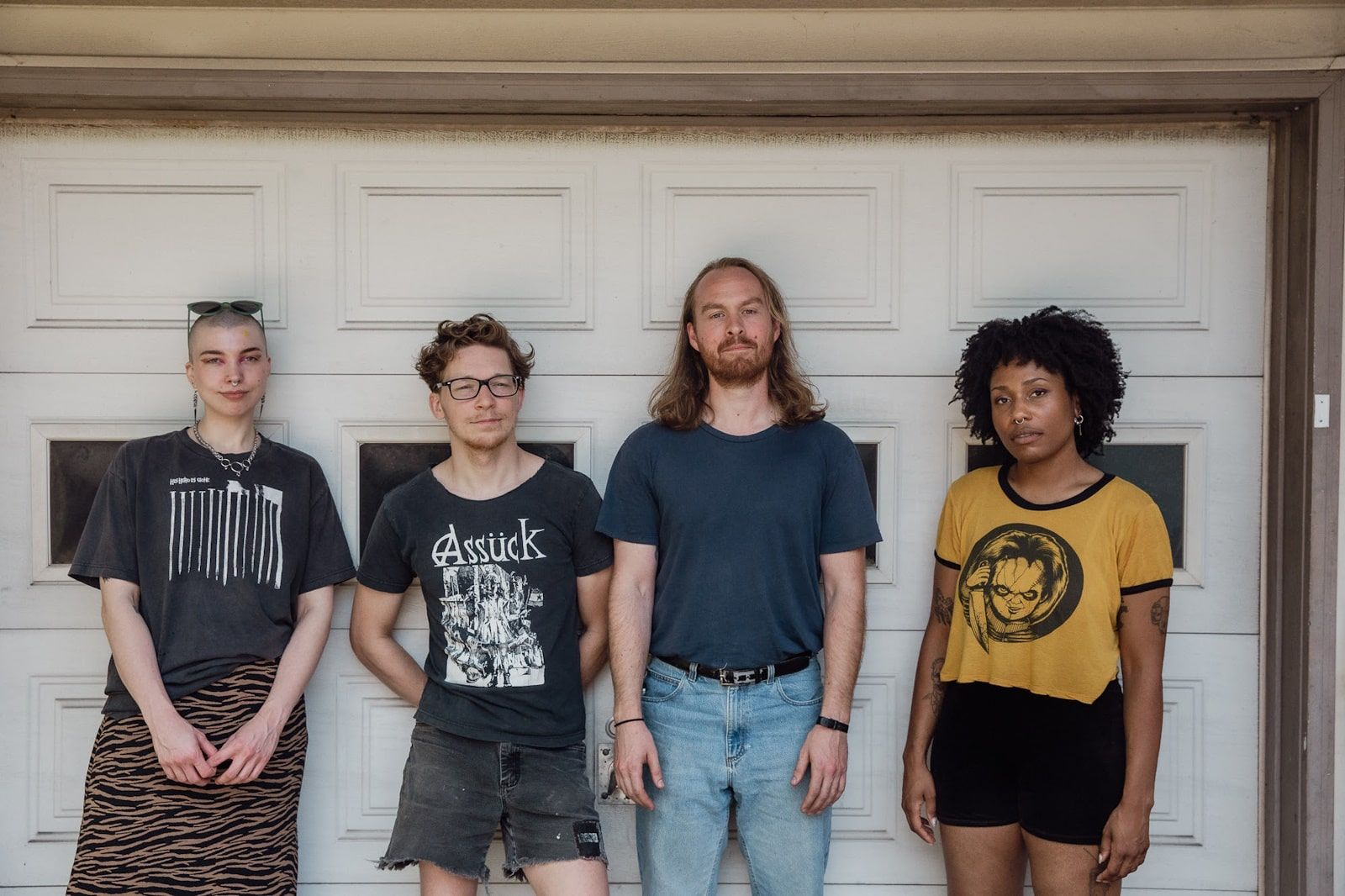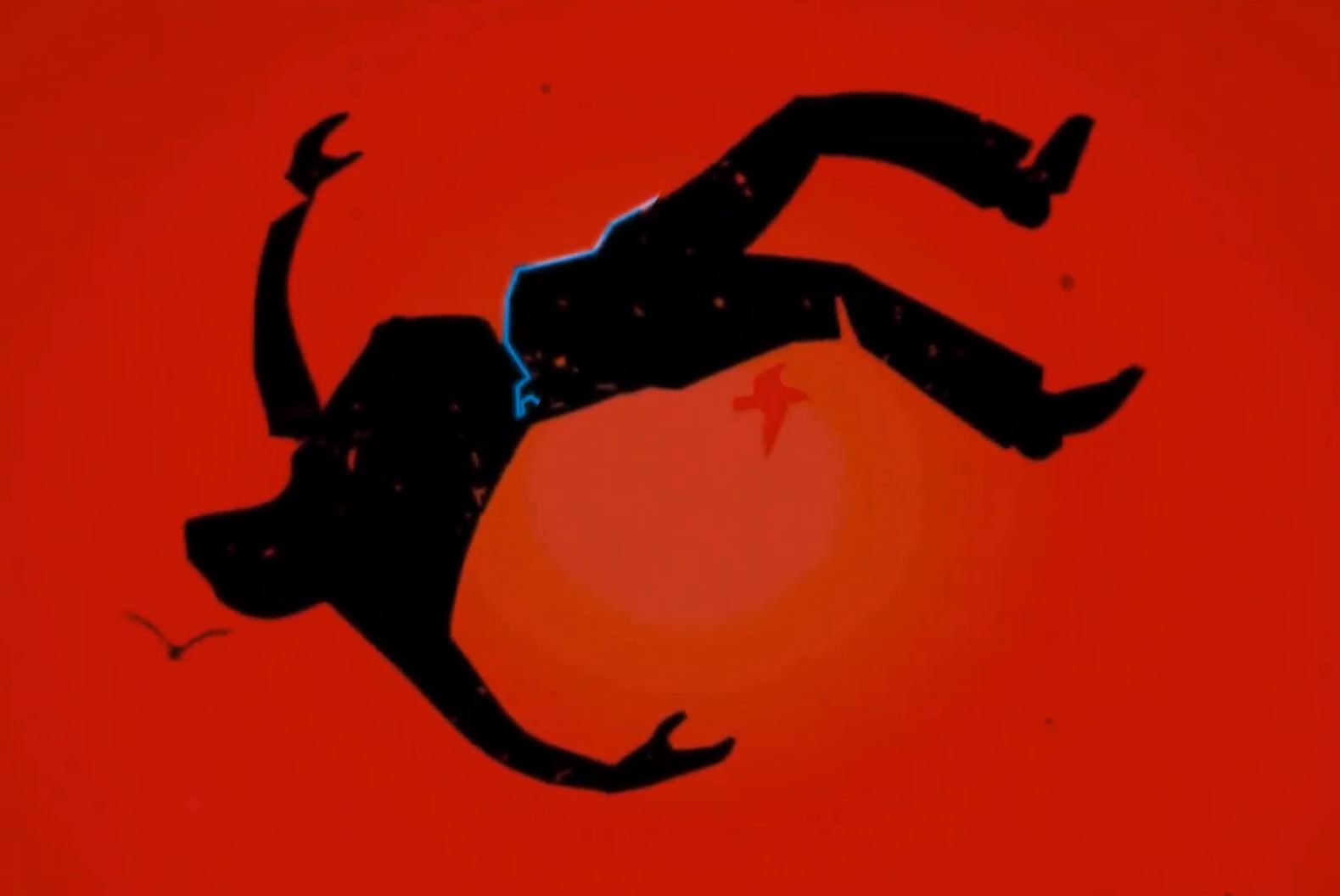Gone Dark, the sophomore album from Human Impact, hit with the force of a sledgehammer on October 4, courtesy of Ipecac Recordings. It’s a relentless onslaught of noise rock driven by the raw, live intensity that defines this New York-based band, featuring some of the most influential figures from the genre’s history. Chris Spencer (Unsane), Jim Coleman (Cop Shoot Cop), Eric Cooper (Made Out of Babies), and Jon Syverson (Daughters) fuse their collective legacy into a sound that feels more relevant than ever.
From the very first notes, it’s clear that Human Impact are delivering a message—a cry of resistance against the subtle forces of control creeping into every corner of our lives.
“‘Hold On’, their latest single and music video, is a great example of that. The song comes as an expression of resistance in the face of a system that’s using convenience and expediency to pry its way into a position of control,” Spencer said, and the track’s punishing riffs give you no time to breathe.
Recorded in Austin’s Cedar Creek Studio with Andrew Schneider, the album captures the rawness and aggression of a live set, and it feels like a return to noise rock’s roots—organic, unpolished, but meticulously crafted.
Spencer’s time spent in the isolation of East Texas during the pandemic brought new elements to Human Impact’s evolving sound, fueled by jam sessions with Cooper and Syverson. What started as informal garage sessions evolved into the pounding rhythms and aggressive basslines that define Gone Dark.
The conversation below dives deeper into the band’s thoughts on capturing live energy, their creative process, and the influences behind Gone Dark.
Your journey as HUMAN IMPACT began in 2020 with the release of your self-titled debut album. Could you share a bit of your history as a band and how your path led to this new album, Gone Dark?
Jim: Chris and I talked about making music really early on, like since 1989 or so! It just took a number of years for us to get to the point of maturity where we were able to do it. We had not been in touch for a few years, and I went to see an Unsane show at St. Vitus (RIP) in Brooklyn. After the show, we started talking a bit more about collaborating and that led into where we are now.
Chris: As Jim mentioned, him and I had wanted to play music together for a VERY long time. After Jim reconnected with me at St. Vitus we began sending initial song ideas to each other. We got a bunch of ideas together and Jim mentioned that Phil Puleo (Cop Shoot Cop, Swans) and Chris Pravdica (Xiu Xiu, Swans) had recently been let go of their positions in Swans and would be up for getting together.
We did some initial recordings at Bisi Studios in Brooklyn, and eventually ended up doing a couple more sessions at Hoboken Recorders. Once we had enough material that we thought would work, we hit up Ipecac to see about getting it out with a label that we liked and trusted. Everything fell into place very organically.
As of the March release of the first record, the Pandemic hit. New York went into lock down the day after our record release show at St. Vitus and multiple tours were cancelled or indefinitely postponed.
We released EP01 during the interim, which was made up of material that had been recorded before the first record to keep the ball rolling. Once the music world began to open back up, Phil and Chris got recalled to play in Swans. I had spent a majority of lockdown playing music with Jon Syverson (Daughters) and my old friend Cooper (Made Out of Babies) and Human Impact had a European tour to do, so they joined us to help. Playing with Jon and Coop really kicked things up for the band.
We started writing and playing new stuff live which eventually became the album GONE DARK. On this record, we really focused on capturing the live aspects of the band. I personally thought of the whole record as if it were one live set, complete with the between song samples and melodies.
The desire to capture the rawness of your live performances was a significant influence on this record. How did the recording process with Andrew Schneider in Austin’s Cedar Creek Studio help you achieve this live intensity in the album?
Jim: Working with Andrew was awesome. We referenced the Unsane album Visqueen sonically – the heaviness, depth and detail that Andrew got in that recording is awesome! But additionally, Chris, Coop and Jon spent a lot of time firstly touring as Unsane, so they totally have a shorthand as a fundamentally live band. And most of these songs were initially hammered out with them in real time and space.
Chris: Andrew Schneider is an amazing sound engineer/wizard. I have worked with him a bunch in the past, and we share a similar musical sound ethos. There’s no one else I’d rather work with. The band was able to play the new stuff a bunch before hitting the studio, so everyone was completely familiar with all aspects of what we were doing. Cedar Creek also has a lot of amazing vintage equipment, so there were a lot of added options sound wise.
“Destroy to Rebuild” feels like a powerful anthem of wiping the slate clean and starting anew. What was the inspiration behind this track, and how do you feel it connects to the chaotic and uncertain times we’re living in?
Chris: Thanks for calling it an “anthem”, it’s really just about exactly what you’ve mentioned. For me, it applies to a lot of things. There are times when the frustration of continuing with an initially flawed plan or method are apparent and it’s time to start over.
The music video for “Destroy to Rebuild” offers an intense and almost overwhelming vision. How do you see the imagery in the video relating to the constant barrage of negative information and societal pressure people face daily?
Jim: Our videos seem to be getting more and more overwhelming, abstract and psychedelic. It’s definitely all a part of a whole. The videos emerge from the music and the lyrics, which come in response to the world we live in. These are overwhelming times. Creating music seems to make it a little more manageable, even if it is a reflection on the tumultuous reality.
Chris: Jim and I share a sonic and visual sensibility that definitely comes through in the videos. It’s amazing to get to work with someone that inherently knows how to create a visual representation for a song like “Destroy to Rebuild”. With this one, we definitely focused on the Destroy aspect. Interpret that as you will…
Noise rock is a genre that has always felt organic and raw. What are your thoughts on how the noise rock scene has evolved in recent years? Are there any newer albums or bands, perhaps even outside the U.S., that have caught your attention or inspired you recently?
Chris: I’m honestly not sure what would be considered “Noise Rock” now. The label seems to be put on all kinds of stuff. I’m not sure that we as a band fall into that labeling. We tend to just do what we like to musically.
You’ve always been associated with the New York scene, which has produced some legendary acts over the years. How do you feel that scene has changed?
Chris: I think initially there were a few band that emerged from New York when it was a lawless, violent, shithole of a city expressing the frustration of urban living but things there have definitely changed there as they have throughout the world. I think there is a much different form of frustration going on now.
What role does New York City itself play in shaping your music, particularly in Gone Dark?
Jim: We definitely come out of NYC in the late 80’s/early 90’s. Living in the city at that time helped form the sound of Unsane and Cop Shoot Cop, and by extension Human Impact.
There was a dystopian beautiful mix of danger and freedom, of despair and longing. That being said, NYC is a different animal now, though there are still some dark corners untouched by corporate sanitization.
None of us currently live in NYC – we are in Maine, Georgia, Texas and California. But the world perhaps now embodies some of those struggles we were up against at that time in NYC.
Chris: New York definitely played a big part in the sonic aesthetic of both Jim and I early on, but the city has really changed. Some of the subject matter on Going Dark would apply to NY, but is also prevalent all over.
View this post on Instagram
With the state of the world being so politically and socially turbulent, how do you, as a band, engage with or reflect on global events? Does this turbulence feed directly into your creative process, or do you find it more important to focus on your immediate environment and personal experiences?
Jim: I feel that our creative process works as an antidote to the insanity of the world we inhabit.
Personally, I think I would be living in anger, depression or resentment if I didn’t have the ability to make music, or at least be creative in some fashion.
It’s like off-gassing the toxicity of the world around us and what I ingest in the media. I do find peace and solace in the natural world – part of the reason for not residing in urban environments.
Chris: I am completely with Jim on this. We are using our music to get some of the frustration out of our system.
Given that some of you are involved in other projects beyond HUMAN IMPACT, could you update us on what’s happening with those projects and how they interact with the energy and creativity you bring to this band?
Jim: I do a bunch of other more experimental and ambient work. For me, this creates a balanced creative output. I like to keep exploring in various terrains and genres, or with no regard to genre. It’s kind of like being Polyamorous in how I make music. Chris and I had an opportunity to do a live noise ambient show in Berlin recently that was awesome, we are hoping to pursue more of this as well.
Chris: Yeah, doing more of the two piece stuff with Jim would be great! I’ve also started writing stuff with no idea where it will go.
You’re about to embark on a tour to support Gone Dark. What can fans expect from your live performances this time around? Will there be any surprises or changes from previous tours?
Jim: The record Gone Dark just demands to be experienced live, both as performers and audience.
Chris: I’m really just looking forward to doing these song full throttle for an audience. Things are always even more powerful played live at high volume! I love what we’re doing and really can’t wait to play this shit with my friends!
Looking ahead, do you have any plans or ambitions for the future of HUMAN IMPACT that you’d like to share? Are there any themes or sounds you’re eager to explore in your next work?
Jim: With our earlier releases, we were exploring a bit, figuring out who we were as a band. With Gone Dark, there is an intensity, focus and clarity that comes with knowledge and acceptance, as well as honing what we do live. There is still room to experiment and reach, and this is what is next and exciting. How far can we push on the walls of the room we inhabit?
Chris: Yes! There are a shit ton of ideas and sounds that I’m looking forward to trying and exploiting. One cool thing about this band is that there are no rules. We’re four friends doing exactly what we feel like doing collectively.
Is there anything we haven’t touched upon that you feel is important for your fans to know as you release Gone Dark and continue to evolve as a band?
Jim: If you can, come see us live! And buy the vinyl, it sounds so much better than streaming!
Chris: I guess all I would say is that if you’re into what we’re doing, we look forward to playing it live for you and are already working on new shit.










